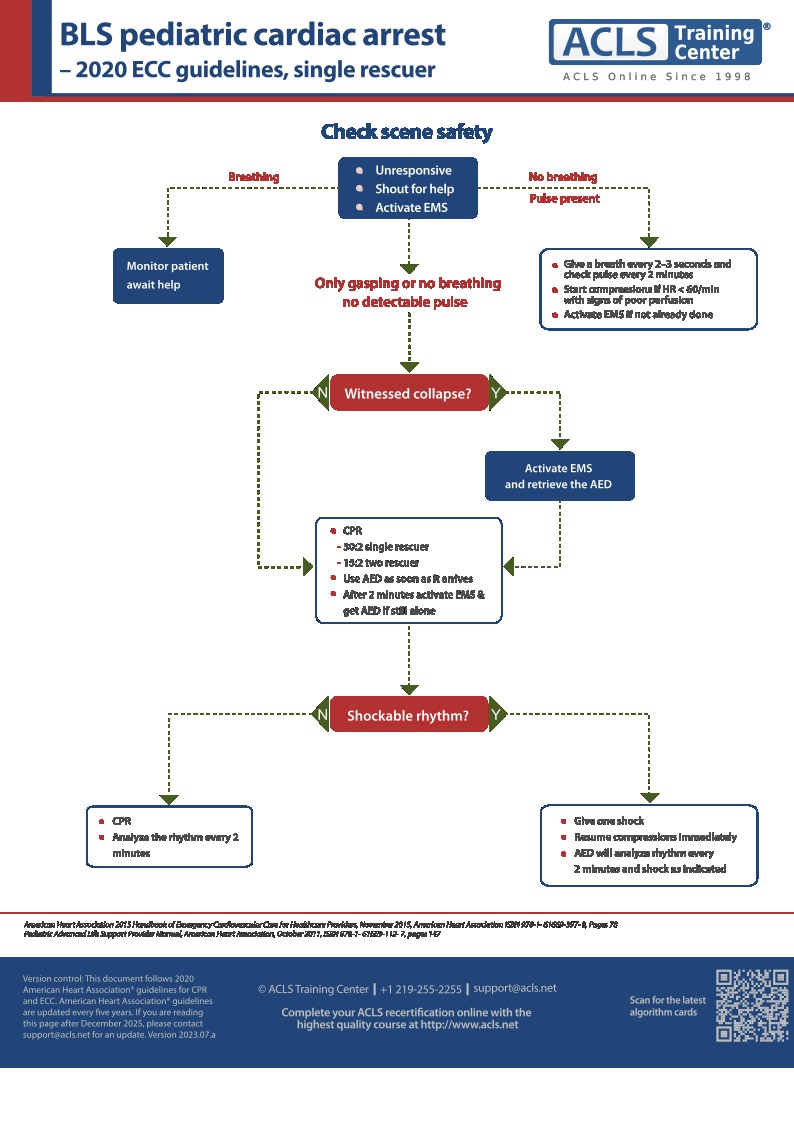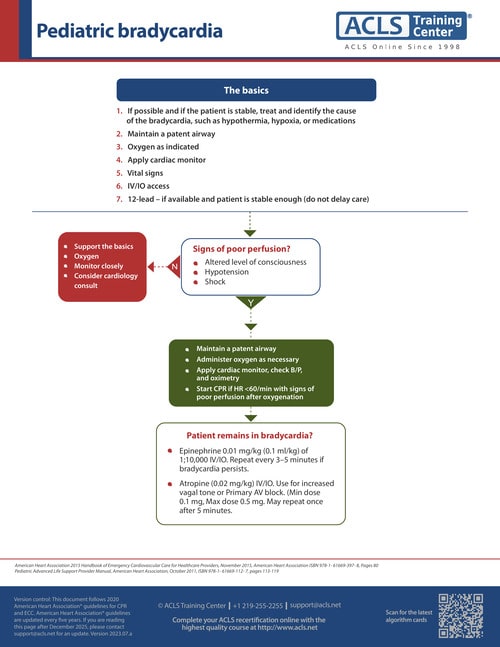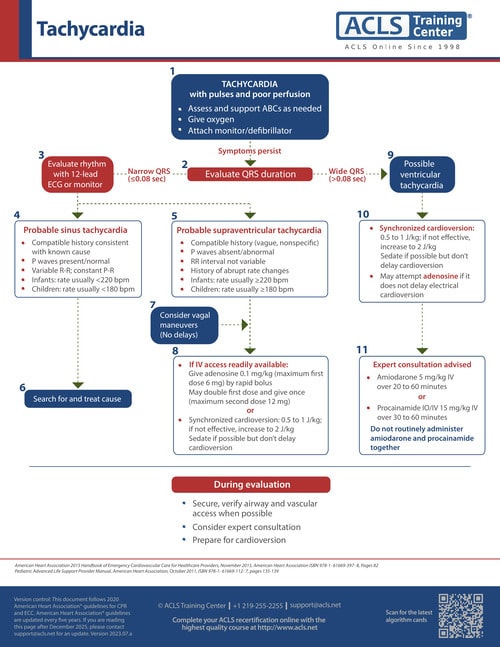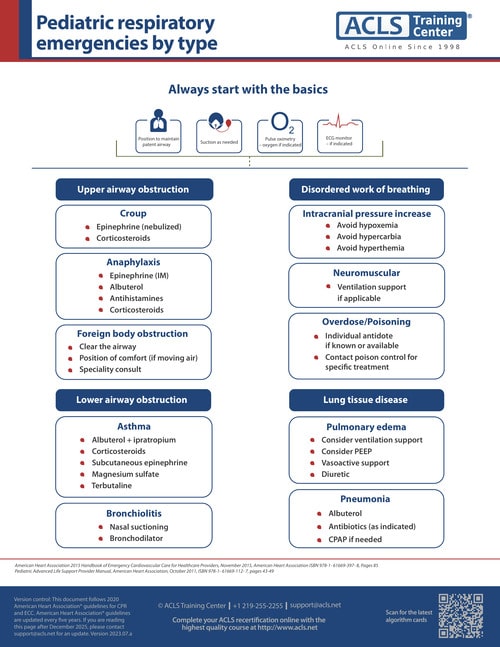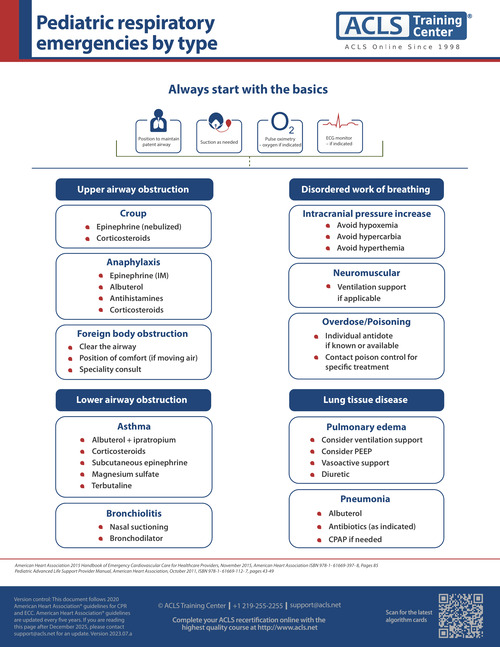Pediatric advanced life support (PALS) algorithms
Last updated: November 5, 2024
Version control: Our ACLS, PALS & BLS courses follow 2020 American Heart Association Guidelines for CPR and ECC. American Heart Association guidelines are updated every five years. If you are reading this page after December 2025, please contact support@ACLS.net for an update. Version 2021.01.c
A critical part of pediatric advanced life support training is an understanding of the PALS algorithms. This page is a free resource to the public to demonstrate these AHA algorithms. See our website terms. Compatible part number: 90-1055, 90-1053, 90-1056.
Cardiac arrest
The cornerstone of a successful resuscitation is delivering quality compressions for the highest percentage of time possible during the resuscitation (at least 60%). Throughout the following algorithm compressions are continuous except where noted otherwise, such as during defibrillation.
Tachycardia
The diagnosis of tachycardia can be a challenging one. In the infant or child with symptoms it is of the utmost importance. This algorithm provides guidance in differentiating the type of tachycardia (wide vs narrow complex) and provides for the initial treatment of the infant or child that is exhibiting serious signs and symptoms.
Respiratory emergencies
These are the most frequent life threatening emergencies in infants and children. This algorithm categorizes them into four categories, upper, lower, lung tissue disease and disordered work of breathing. The algorithm then provides us with the recommended treatment modalities for each type of respiratory emergency.
Pediatric cardiac arrest algorithm—advanced
When a child is in cardiac arrest begin CPR immediately. Push hard and fast at 100–120 beats per minute. Ventilate with a bag-mask and attach to supplemental oxygen. Two-person CPR for a child without a definitive airway will be at a ratio of 15 compressions to 2 breaths. Attach the monitor/defibrillator as soon as possible and check for shockable rhythm.
Primary assessment algorithm
In the adult, sudden cardiac death caused by ventricular fibrillation, is the most frequent cause of cardiac arrest. In infants and children, cardiopulmonary arrest is most likely secondary to another condition such as respiratory failure or trauma causing hypovolemia. The primary assessment in pediatrics is very important because it is focused on catching issues that may lead to cardiac arrest before they do so.
For extensive information about crash carts checkout neonatal crash cart supply & equipment checklist. See our separate pages for ACLS algorithms. New and for BLS algorithms. Also, check our ACLS and BLS courses for more information or getting certified. Our courses are 100% online and accredited.
Planning to certify/recertify PALS?
Get a reminder when you need to take the exam
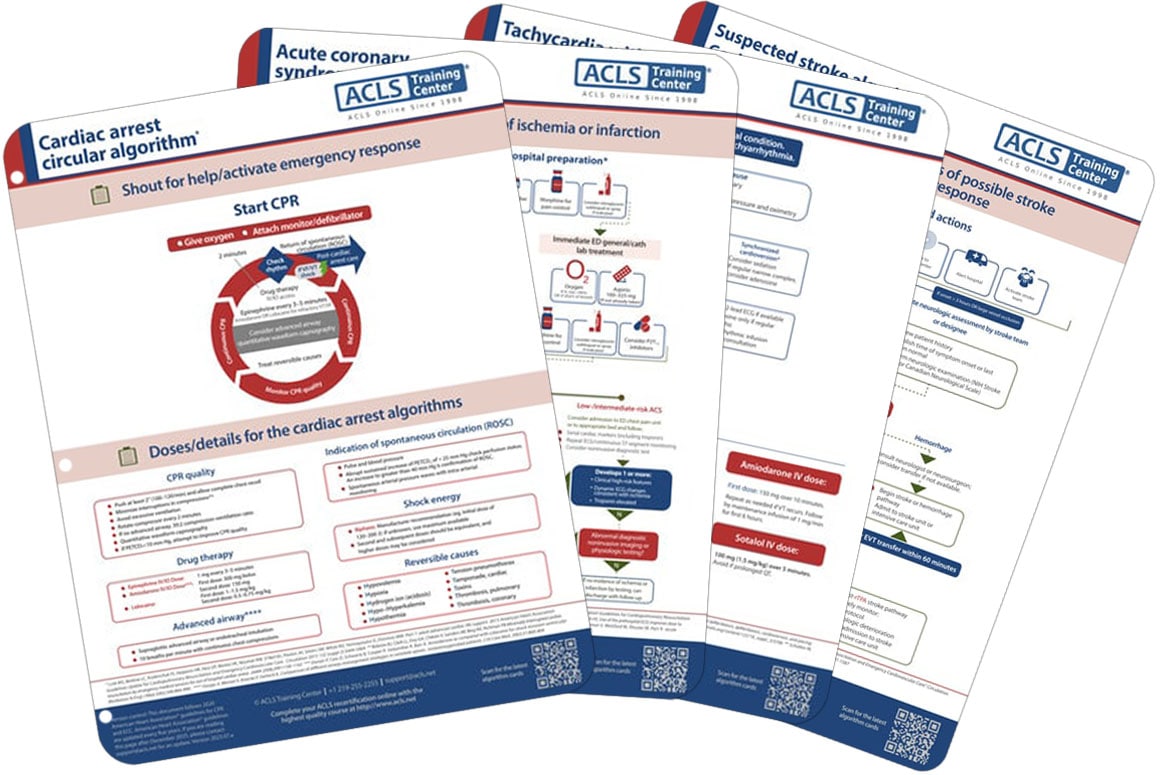
New! We now sell vinyl PALS crash cart cards
This is complete vinyl set of crash cart cards. This is a 4-page, double sided set we produced for use in operating rooms, emergency rooms, and ambulances. The cards are US Letter size (8.5" x 11").
Part no: 90-0199
Price: $40 per set, 30% discount with purchase of 50 or more.
Planning to certify/recertify ACLS?
Get a reminder when you need to take the exam

Written by Jessica Munoz DPN, RN, CEN, providing nurse training at Yale New Haven Health-Bridgeport Hospital since 2022. Previously in healthcare and education at Griffin Hospital, St. Vincent's College of Nursing and Sacred Heart University Medical Center.
More by this author:
